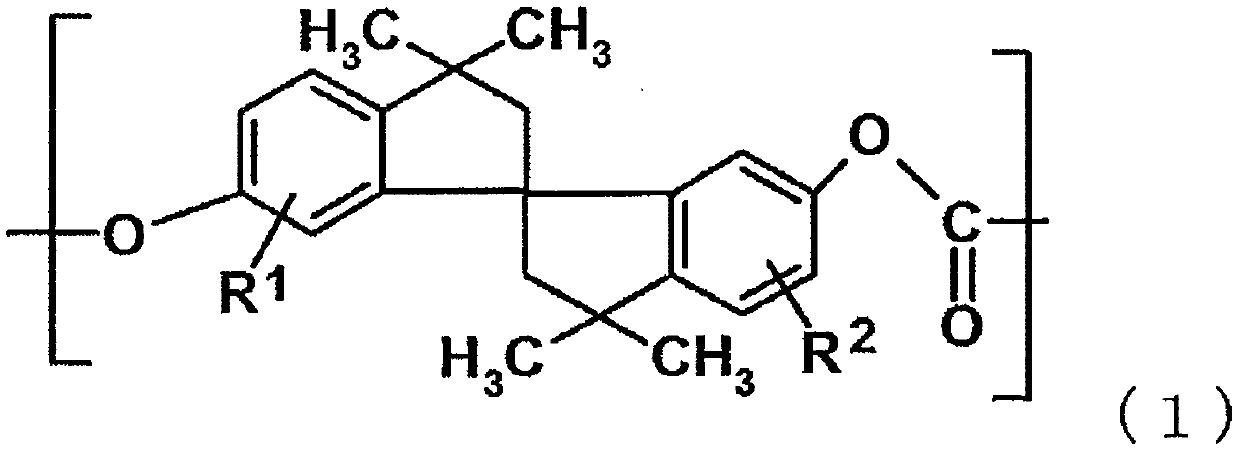Polycarbonate copolymer
A technology of polycarbonate and copolymer, which is applied in the field of polycarbonate resin, can solve the problems of poor amine resistance and achieve excellent heat resistance, excellent impact resistance and remarkable effect
- Summary
- Abstract
- Description
- Claims
- Application Information
AI Technical Summary
Problems solved by technology
Method used
Image
Examples
Embodiment 1
[0196] Charge 4555 parts of 48% aqueous sodium hydroxide solution and 23088 parts of ion-exchanged water into a reactor equipped with a thermometer, a stirrer and a reflux cooler, and dissolve 6,6'-dihydroxy-3,3,3',3 '-Tetramethyl-1,1'-spirobiindane (hereinafter referred to as SBI) 741 parts, bisphenol C (manufactured by Honshu Chemical, hereinafter referred to as BPC) 1644 parts, bisphenol A (manufactured by Nippon Steel Chemical Co., Ltd., Hereinafter, 1645 parts of BPA and 8.06 parts of bisulfite (manufactured by Wako Pure Chemical Industries, Ltd.) were added, and 20443 parts of dichloromethane were added, and 2000 parts of phosgene were blown in at 15 to 25° C. for about 90 minutes while stirring. After the blowing of phosgene is completed, add 661 parts of 48% sodium hydroxide aqueous solution and 91.4 parts of p-tert-butylphenol, start stirring again, add 4.1 parts of triethylamine after emulsification, and further stir at 28-35°C for 1 hour, and end reaction.
[0197]...
Embodiment 2
[0200] Polycarbonate resin composition particles were obtained in the same manner as in Example 1 except that 2261 parts of BPC, 741 parts of SBI, 1097 parts of BPA, and 84.2 parts of p-tert-butylphenol were used. Table 1 shows the results of evaluation using the pellets.
Embodiment 3
[0202] Polycarbonate resin composition particles were obtained in the same manner as in Example 1 except that 2055 parts of BPC, 494 parts of SBI, 1462 parts of BPA, and 96.2 parts of p-tert-butylphenol were used. Table 1 shows the results of evaluation using the pellets.
PUM
 Login to View More
Login to View More Abstract
Description
Claims
Application Information
 Login to View More
Login to View More - R&D
- Intellectual Property
- Life Sciences
- Materials
- Tech Scout
- Unparalleled Data Quality
- Higher Quality Content
- 60% Fewer Hallucinations
Browse by: Latest US Patents, China's latest patents, Technical Efficacy Thesaurus, Application Domain, Technology Topic, Popular Technical Reports.
© 2025 PatSnap. All rights reserved.Legal|Privacy policy|Modern Slavery Act Transparency Statement|Sitemap|About US| Contact US: help@patsnap.com



